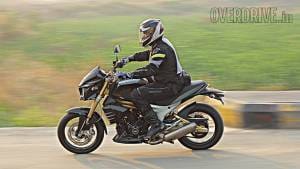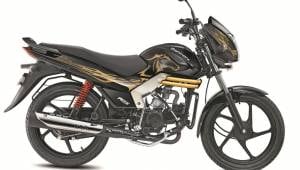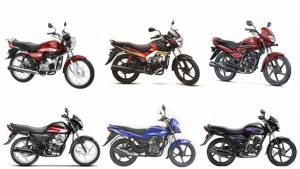What the Centuro means for Mahindra Two Wheelers
Mahindra Two Wheelers' motorcycle adventure started off on a pretty rocky note with the Stallio. But to the manufacturer's credit, instead of a high-voltage marketing campaign as a fix, Mahindra did an immensely mature thing and took a step back. Production was closed, any future sales were suspended and the decision was taken to return to the drawing board. This is a very expensive way to do business but in my opinion, given the situation, perhaps the most honest way.
 2013 Mahindra Centuro
2013 Mahindra Centuro
Anyway, to cut a long story short, the Stallio prompted a sea change at Mahindra Two Wheelers. The structure of the business, the way the organisation was structured... Everything was re-evaluated and where required, reconstituted to ensure that a Stallio wouldn't happen again.
Since the Stallio, Mahindra entered the market again about five months ago with the Pantero, which turned out to be a reasonable 100cc bike in our tests. It was clearly far, far, superior to the Stallio, but equally clearly some way from the segment's best.
And now, Mahindra are bringing their second motorcycle (I'm going to ignore the Stallio chapter from this point on because it adds no value to this story hereafter), the Centuro.
The Centuro is also a 110cc motorcycle like the Pantero, but it is more apt to say the Panteros that you see in Mahindra showrooms today share the Centuro's engine. This is because since the Pantero engine, Mahindra Two-Wheeler R&D has been hard at work improving the engine in every way, finding a better chassis balance and so forth and a lot of these changes, if not all, will make their presence felt on the Pantero as well.
 2013 Mahindra Centuro
2013 Mahindra Centuro
What changed at Mahindra Two-Wheelers?
When the Stallio was being designed and engineered, Mahindra had taken a radically different approach to motorcycle development. They owned Engines Engineering and the Italian company was supposed to engineer the motorcycle. Mahindra had, effectively, outsourced development, technology as well as sourcing.
We understand that this is where the troubles began and there was a dramatic difference between the reference prototypes and the final production Stallios that went to market. Sort like an airplane crash, the blame doesn't lie in one place, but its a series of errors and misjudgements that compounded each other.
But the silver lining was that Mahindra understood without a doubt that they needed to own the core engineering and technology aspects of their motorcycles to make a go of the two-wheeler business. It is the hardest, most investment-intensive way to do business perhaps, but it was the only way to guarantee sustainable success.
This led to the creation of Mahindra R&D. Now you might ask why PS Ashok, who was with Mahindra R&D and most recently worked on the Maxximo was drafted in to head the two-wheeler research and development.
Well, I've known Ashok since he was the chief of R&D at LML and in my mind the Freedom 110 - the first motorcycle LML created on their own - was a eye-openingly good entry-bike, even if it wasn't very pretty. When I heard that Ashok was heading R&D, I was quite optimistic about good Mahindra bikes long before the Pantero came along to show that the company was headed in the right direction.
Mahindra based the two-wheeler R&D out of the old Kinetic facility in Pune and put in place all the manpower, instruments and machines required to completely develop a motorcycle in-house. Ashok has never been shy of looking abroad for help with specific aspects of motorcycle development, where India may not have a sufficiently well-developed talent pool, and this too is part of the makeup of things of Mahindra R&D.
On the business side, Mahindra also have been busy. They have refreshed their dealer list with fresh talent and an expansion plan is also in place. The organisation itself has three arms; the operations team is the biggest and they manage routine function as well as logistics Independent, smaller and more flexible on one side is the innovations team as in the R&D outfit, and on other side is another small, quick moving team sales and marketing. The latter has divided in the country into seven instead of the usual four zones and each 'cluster manager' is almost a CEO of his region with far reaching powers. The empowerment is to ensure that each cluster works closely to sync with the needs of customers in that cluster. Given how diverse India can be as a country, this appears to be a good move on Mahindra's part.
Attention to detail
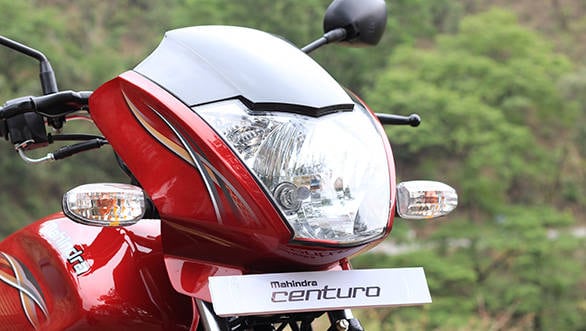 The Centuro's headlamp is different from the Pantero's and is a more filled-out unit
The Centuro's headlamp is different from the Pantero's and is a more filled-out unit
The styling of the Centuro looks squarer and more bold from the front than the Pantero, and similarly the side panels and other plastics have been reworked. Engineers from Mahindra R&D repeatedly let loose details that go to show how much attention to detail has been brought to bear upon the Centuro.
For instance, we were given an enthusiastic five minute discourse on the 'glassiness meter' that Mahindra now uses to ensure that the paint is both appropriately glossy as well as appropriately thin. Too thick and it starts to chip off, too thin and it wears out and becomes dull rapidly.
Build levels felt as good as anything in the segment, though Mahindra can do more work in finish, with a specific focus on panel gaps and smaller details like these.
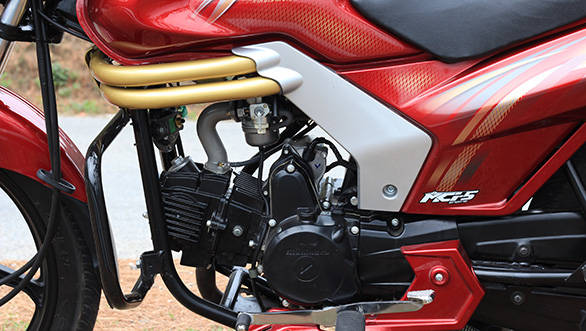 The Centuro gets a reworked engine which claims to have lower NVH than some of the competition
The Centuro gets a reworked engine which claims to have lower NVH than some of the competition
The motorcycle also boasts a thoroughly upgraded new engine that Mahindra promises has better NVH control than some of the competition while offering more power and torque right through the rev range. Mahindra have also acquired five patents during the development including a high-pressure lubrication system that Ashok told us alone is responsible for as much as 7-9 per cent more engine performance.
Again on the chassis front, Mahindra wanted more stroke on the rear suspension. So the Stallio chassis was first redesigned to take care of that. The extra travel and the triple rated spring, say Mahindra, offer a gimmick-free solution to stable ride single up or two up. To further bolster the handling, the front forks were set further apart, which brings stiffness to the package.
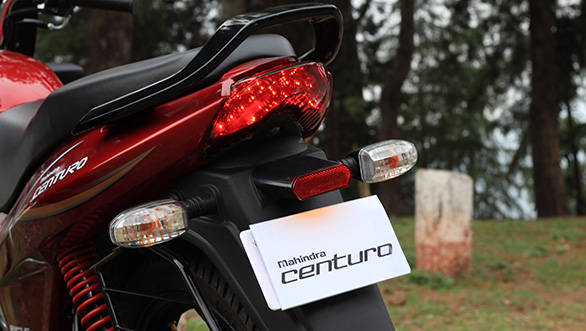 The Centuro's rear suspension has been reworked to make for a stable ride
The Centuro's rear suspension has been reworked to make for a stable ride
Then Mahindra went and talked to the customer and from there came the rest of the features on the bike. Now, I will the first to admit that these sound like frivolous additions that the hardcore enthusiast would sneer at. But as I was given to understand, these features do have utility and the customers who were shown these features were quite taken by them.
Features
I think the most useful feature is a Distance to Empty indicator that sits on the right of the three-panel display (the tacho is analogue). When the fuel level drops below 3 litres, the readout shows the distance left at the current riding style (usually an engineered quantification of throttle opening and engine rpm). This is an easy feature to handle with a fuel injected engine because you have a motorised fuel pump as well as precise fuel feed controls that allow superlative accuracy in judging in how much further the vehicle will travel in the current style of operation.
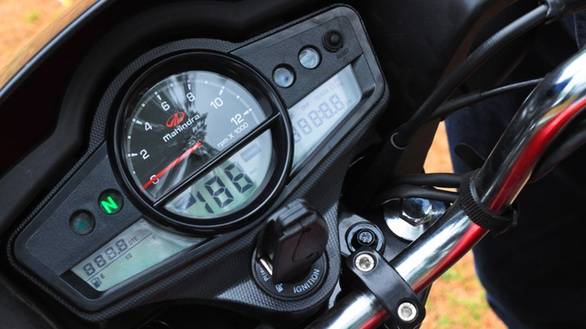 The Centuro has an unusually comprehensive console
The Centuro has an unusually comprehensive console
In the Centuro, this is challenge. Fuel is gravity fed which means fuel level measurements have to resort to the float and the carburettor is an analog fuelling system which means it might meter the fuel with great accuracy but it is much harder to accurately report this metering to a electronic control unit for the purpose of gauging the distance to empty. What Mahindra R&D have developed is a patented new float system that allows unprecedented accuracy in fuel level reporting. And the best bit? It doesn't run off the battery which means the average 100cc user (who replace batteries reluctantly if at all), will still have the DTE working long after his battery has gone the way of the dinosaur.
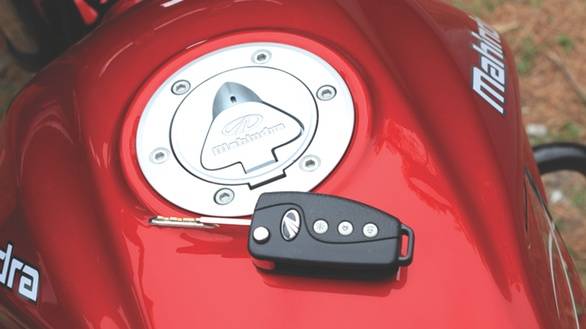 The Centuro gets a very luxury car-esque key fob
The Centuro gets a very luxury car-esque key fob
The other features centre around the flip key fob that handles security for the Centuro. This is a car-like thing visually and again, the customers seem to love the idea that their friends think they've bought a car. The key - you get two fobs with the bike - has an LED torch, operates follow me home lights and can lock the bike. The bike also comes with the segment's first immobiliser.
And just when I was thinking that these gimmicks were frivolous, Viren Popli, the Executive Vice President, M2W candidly added, "If we hadn't engineered the Centuro right and then done all these features, we would have looked silly. We are quite confident that the basic bike is as we believe it should be. These wow features are the cherry on the top."
Read our First Ride report on the Mahindra Centuro here.
